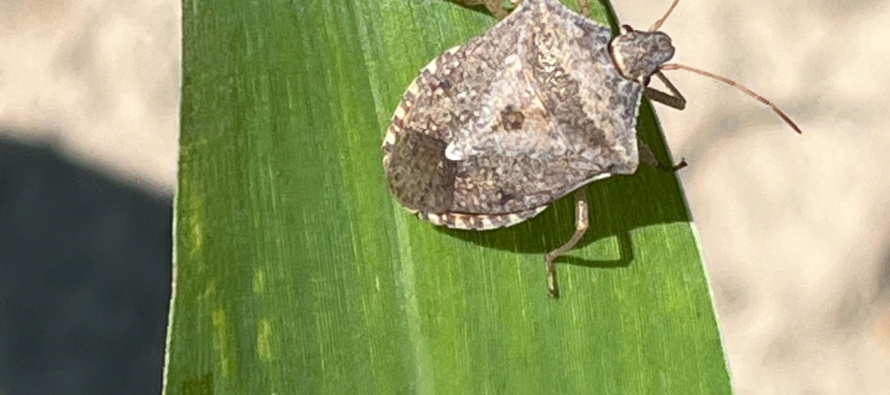Brown Stink Bugs in Seedling Corn: Scouting and Management

Related Articles
- Calcium and Magnesium For Mississippi Crops 1
- March 11 Precision Agriculture Workshop 0
- Ground Speed Affects Spray Droplet Deposition 0
Latest Tweets
Over the past week, several reports have emerged of brown stink bugs infesting seedling corn. These pests cause damage by feeding on the stems of young corn plants. The severity of feeding damage can vary. Less severe initial damage symptoms appear as neat rows of holes that develop into ragged elongated holes as the leaves grow and expand. Chlorotic streaking at the site of injury is usually present also. More severe injury symptoms include deadheart and/or plant death.
In many cases where only leaf streaking and feeding holes in leaves occur, the growing point is not affected and the plants are able to recover fully. This damage is largely cosmetic with little to no impact on yield. With more severe injury, some yield loss may occur, but often it is restricted to relatively small areas of the field and is unlikely to significantly affect whole-field yield averages.
Brown stink bugs are more commonly found in fields with surface residue but can also be present in conventionally tilled fields. Populations tend to be concentrated near field edges, especially in areas with overwintering cover such as Italian ryegrass, ditch banks, or adjacent wooded areas.
Scouting for stink bugs is very challenging, as stink bugs frequently move down the plant or hide beneath residue. Damage is often visible even when insect counts have been very low. Stink bug activity is governed by temperature. Damage is often noticed following a period of cooler weather that slows corn growth, keeping the plants in susceptible stages longer.
In conventionally tilled fields where damage is evident, but few bugs are found, it’s likely there is some movement in and out of the field. In these fields damage is usually near stink bug overwintering sites, such as tree lines. In fields with a lot of surface residue, soybean residue from the previous years crop for example, damage can extend across the field as the plant residue provides shelter for the stink bugs.
Research shows that corn is most susceptible to yield loss from stink bug injury between the VE and V4 growth stages. However, fields should be scouted until plants reach 24 inches in height. Treatment is recommended when 10% or more plants are infested with one or more stink bugs.
Control Options:
Pyrethroids are currently the only effective control option for stink bugs in corn. Although they are not ideal for brown stink bugs in other crops, they are the most effective option in corn. Bifenthrin-based products are the most effective, however, there is concern about using emulsifiable concentrate (EC) formulations of insecticides with certain corn herbicides due to the potential for crop injury. Other concerns could include compatibility issues resulting in clogged tips and screens. Alternative options such as Warrior or Mustang Max will likely get you through but not to the same level as bifenthrin.






Let me tell You a sad story ! There are no comments yet, but You can be first one to comment this article.
Write a comment